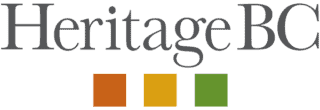- Heritage 101
- Advocacy
- Accessibility for Historic Places
- Climate & Sustainability
- Cultural Maps
- Heritage Place Conservation
- Heritage Policy & Legislation
- Homeowners
- Intangible Cultural Heritage
- Reconciliation
- Indigenous Cultural Heritage
- Setting the Bar: A Reconciliation Guide for Heritage
- 1. Heritage and Reconciliation Pledge
- 2. Acknowledging Land and People
- 3. Celebrating Days of Recognition and Commemoration
- 4. With a Commitment to Learn
- 5. Committing to Strategic Organizational Diversity
- 6. Mission-Making Room for Reconciliation
- 7. Possession, Interpretation, Repatriation and Cultural Care
- 8. Shared Decision Making
- 9. Statements of Significance and other heritage planning documents
- 10. Heritage Conservation Tools, Local Government Act
- Racism: Do Not Let the Forgetting Prevail
- Taking Action: resources for diversity and inclusion
- Webinars On-Demand
In your practice and experience, what it is, or what is not, intangible heritage?
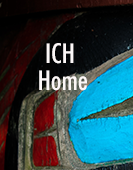 |
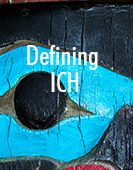 |
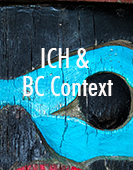 |
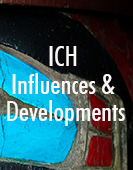 |
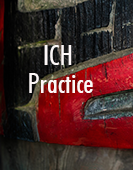 |
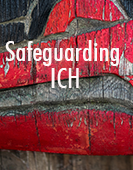 |
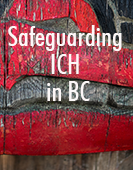 |
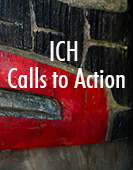 |
Agnieszka
I don’t know what intangible cultural heritage is not, but I have a few examples that I can share about what I think cultural heritage is.
For me, intangible refers to things and practices that are happening ‘in the moment’ that they’re happening. If we think about closing our eyes and smelling a spice, that we know has been used by our predecessors and passed down, or when we hear the sound of music or drums or pipes or another instrument. The ‘in the moment’ can also be evidenced by traditional beekeepers in Poland who enjoy hearing the sound of bees buzzing, as they reach into the hive and squeeze honey from the comb, for example.
To me, that is intangible heritage because it is something that has been passed down from one generation to another, and it brings up a lot of values that are associated with that activity or with the practice. In Anishinaabe communities, a group of Indigenous people around the Great Lakes in Canada and the US, Intangible Cultural Heritage can also occur ‘the moment’ a land-user puts down tobacco. In that one-second moment, the land-users puts out his hand and lets the tobacco out of his palm and say a brief prayer or a thank you prior to harvesting. To me, those are examples of intangible cultural heritage.
So, it’s really the things that we feel and do as a collective. It is ‘felt’ through our senses such as how we experience a story shared about a constellation; it could be the story of the Big Dipper, or Callisto from Greek mythology, or it also could be the Anishinaabe description of the constellation and how the Fisher saved the birds. Cultural heritage could also be the oral story, or an origin story associated with how we view the world and our relationship to it as we look at the stars and the constellations.
UNESCO helps narrow down that understanding by illustrating that through the ‘ICH domains’. Those are helpful in starting to see what is really ‘unseen’ sometimes or perhaps what is felt, or what is passed on from generation to generation.
For me, it refers to using all senses to experience something that is valued and passed down from one generation to another, from one individual’s collective heritage to another. Sometimes they can be very small things, like a family practice that is a part of family heritage – we all have those secret recipes to be passed down, and that is a form of intangible cultural heritage.
But it is also those key elements of heritage that are important to a collectivity like language. Language transmission is a vehicle for Intangible Cultural Heritage, and it is one of the important ones as languages carry world views.
When we talk about intangible, we generally refer to something we can’t always see or touch but it’s something that is immensely valuable to the point of passing it down generation after another.
For example, a skill that a trapper has, for example, was passed down to him by his elders, and he now passes it down to the next generation so his nephews and sons can continue living the same traditions, practices, and customs that guide how people live and relate to their world and what they value.
Katharine
That’s a really great and impassioned definition. Very vivid and full of imagery of a bunch of examples of intangible cultural heritage.
It’s true that UNESCO does have a fairly broad definition of Intangible Cultural Heritage that comes from the UNESCO 2003 Convention on the Safeguarding of Intangible Cultural Heritage (here). And I would say the only addition that I would make to Agnieszka’s definitions is that UNESCO really focusses on the idea of practices, knowledge and know-how.
I think that’s really important because if we’re talking about policy development, then we need to be thinking about transmission. How is intangible cultural heritage passed from one person to another, from one generation to the next? How can we think about the different ways to create the conditions to ensure that the transmission can continue and flourish?
I would not want to venture a definition of what is not intangible heritage, because in a practical sense, it is better to apply positive definitions for people working in heritage programming and policy development.
One of the key elements of the UNESCO convention on intangible cultural heritage is its Ethical Principles (here), which outline the idea that it’s up to communities, and tradition bearers, to define what is intangible cultural heritage for them.
UNESCO is the only UN agency that has a system of national commissions, and it has a huge global network of country-based offices whose role is to promote UNESCO programs and priorities at the country level. CCUNESCO (here) is an independent organization that operates within the Canada Council for the Arts. As the program officer for culture, I work to raise awareness of UNESCO’s culture sector and its priorities, including its suite of culture conventions, which includes the 2003 Convention on Intangible Cultural Heritage. Standard setting is in fact the key activity of UNESCO’s culture sector. We’re based in Ottawa, which is the traditional territory of the Algonquin and Anishinaabe people. UNESCO is headquartered in Paris.
George
I’m coming at this from the perspective of an archaeologist, and as a white settler living here on unceded Coast Salish territory.
In the course of working with and for indigenous peoples for over 30 years, I’ve learned to look at “heritage” in a more inclusive manner than many of my colleagues, one that foregrounds its intangible aspects. The emphasis on tangible expressions in the realm of heritage, that is the focus on objects and places and structures, as evidenced in The Hague Convention and many other pieces of legislation is really understandable. (Note: George addressed this more fully in various materials, including “Touching the Intangible: Situating Material Culture in the Realm of Indigenous Heritage Research.” In The Routledge Companion to Cultural Property, edited by J. Anderson and H. Geismar, pp. 212–231. Routledge, London and New York. 2017.”
But what I’ve learned is that heritage is not about things, it’s about the relationships that people have with things. (See George’s TEDx presentation “Why Heritage is Not Just About ‘Things’ here).
And with this in mind, I’ve come to define heritage in a way that includes both the material, that is objects and places, but also reaches out to include the intangible—the knowledge, customs, practices, songs, designs, and responsibilities that are conveyed through generations… that define or contribute to a person or a group’s identity, wellbeing and, and worldview.
Furthermore, in considering any aspect of heritage, we must recognize that no object, no artifact, no place has any meaning without the values that are ascribed to them by people today or in the past, whether by the descendants or the settlers. When it comes to looking at Indigenous heritage, which is the primary realm I work within, things are more complex than they are with other aspects of heritage because we’re often dealing with different worldviews from that of the dominant West. The use of the plural here is important because of the great diversity both between and within Indigenous groups.
